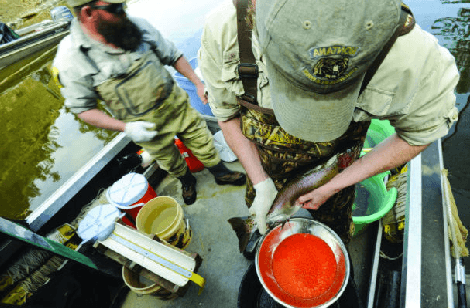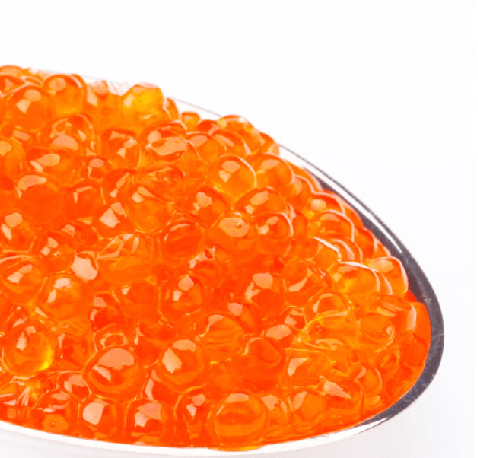In a peaceful cove on Holter Reservoir, almost 90 rainbow trout bristled in 2 large cages A net swept with, scooped up 3 females bulging with eggs and swung them aboard a watercraft where Fish, Wildlife and Parks fisheries biologist Eric Roberts and fish culturist Josh Culver waited.
In three nights of live netting rainbows, FWP crews caught over 900 trout, then chose the finest fish from those efforts to gather for eggs. The 88 rainbows split by gender into 2 cages.
rested motionless below the water’s surface up until the net entered their domain. Then the cages became a whirling twister of fins and tails prior to falling back into a lull.

Holter Reservoir has virtually no natural spawning rainbows. Biologists see generating in the Missouri River below Hauser Dam and in tributaries, but hardly any with hatchery fish in the lake itself, Roberts said.
To keep the trout fishery, FWP harvests and fertilizes eggs, then cultivates the brood at Big Springs Trout Hatchery in Lewistown. The state uses eggs from Holter to stock Canyon Ferry and Hauser reservoirs, plus some lakes near Great Falls, Roberts said.
In the past, FWP stocked fingerlings, but enhancing walleye populaces beginning in the mid-1990s in the reservoir system made fast dishes of the small trout. FWP started equipping larger trout in response, and rainbow populations have rebounded.
FWP stocks 2 strains of trout in Holter: the Arlee and Eagle Lake stress. The Eagle Lake stress is wilder and will travel into the river and spawn. The Arlee is a more tamed strain that has the tendency to grow bigger and faster and have a more aggressive bite, Roberts stated.
Fisheries technician Chris Hurley dropped the three ladies into a water-filled bin including an FDA-approved anesthetic. Within a few minutes, the fish soothed and Roberts reached in, plucking one out by the tail. He placed it on a ruler and read off the measurements.
“Twenty-two point one. Lady. The hatchery,” Roberts sounded off.
Fisheries technician Troy Humphrey went into the information on his clipboard, and afterwards held up a Dixie cup as Roberts put his fingers near the rainbow’s opening, and with a fragile press fluid shot into the cup. Culver did the very same with the next lady. The state tests the ovarian fluid to examine for numerous illness that can pass from mother to egg.
Holding the fish over a sterilized metal bowl, the 2 started “stripping” the females by making long, squeezing runs with their fingers down the fishes’ stomaches. Eggs shot out in an orange coagulation of nearly 3,000 raindrop-sized eggs mixed with mucus. The fish looked like deflated balloons as the last few eggs dropped in the bowl.
When finished, Roberts and Culver released the fish over the side. It took a minute for the dazed trout to discover their bearings prior to a couple of tail flicks sent them back into the deep.
As soon as the roe of six rainbows filled the bowl, four males were plucked from the bin. A capture fertilized the eggs, and with a few swirls from Culver’s finger, the spawning was nearly total. The eggs were moved to a cooler to be disinfected in an iodine option before making their trip to Big Springs.
The team prepared to return at least 2 even more times over the spring to gather a mix of eggs from trout that spawn at various times.
Three fishermen in a passing watercraft swung by the outskirts of the cove and peered intently at the considerable fish.
“What’s the greatest trout?” among the fishermen screamed.
“About 25,” Roberts screamed back.
People have a big interest in fisheries, and Roberts and other biologists regularly field concerns about exactly what they’re seeing and doing, he said. The questions are just part of the task and something to which they’re quite accustomed.
The males satisfied a various fate than the females. The scene played out like the Pike Place Fish Market in Seattle, with male rainbows flying with the air back into Hurley’s web. He swung them into a bin on shore, where FWP fish health professional Amanda Bryson had actually set up a mini lab filled with test tubes and a cutting board.
“It’s a shame to need to kill all these fish, however it’,s the only means to test for pathogens,” she said.
Bryson skillfully slit the rainbows open, plucking out bits of kidney and spleen and putting them in the test tubes. Each test tube held the organs of 5 males to be examined at the state fish laboratory in Bozeman. FWP tests 60 fish from the generating population. If the tests are negative for various viruses and germs, the state certifies the populace for equipping. Each populace must be certified yearly, she said.
When Bryson struck her quota, two males received a reprieve from the cutting board. Humphrey made use of a hole punch to mark a fin so the males would not be utilized to generate once again.
Eggless ladies returned into the much deeper water. Without the human assistance, the eggs are never laid and the trout ultimately absorb them back into their bodies, Humphrey said.

The fish utilized for the general are mature and in the 3- to the 4-year-old array. FWP occasionally documents a 5-year-old trout, but many hatchery fish do not make it that long, Humphrey stated.
By lunch, say goodbye to trout swam in the traps and a looming thunderstorm lingered over the back of the Sleeping Giant. An approximated 264,000 fertilized eggs sat in coolers aboard the FWP watercraft. After testing, they will return on trucks in about a year as 6- to 8-inch trout.
“Holter is the very best area to catch fish for the generate since they simply cruise up and down the shorelines,” Humphrey said. “If we let the males go, they go right back to cruising and we simply end up capturing them again.”
